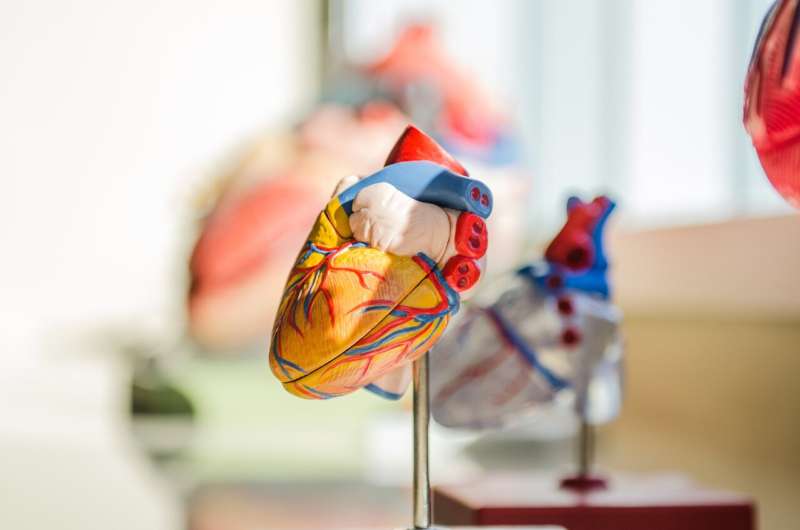Credit: Unsplash/CC0 Public Domain
A recent study revealed that endovascular repair of complex aortic aneurysms using fenestrated and branched endografts provides a safe and effective alternative to open surgical repair, with the lowest ever reported mortality rate in this patient population, according to researchers at The University of Texas Health Science Center at Houston (UTHealth Houston) and Memorial Hermann Heart and Vascular Institute Aortic Center.
The study, "Midterm Outcomes of a Prospective, Nonrandomized Study to Evaluate Endovascular Repair of Complex Aortic Aneurysms Using Fenestrated-Branched Endografts," led by senior author Gustavo S. Oderich, MD, was published in the September 2021 Annals of Surgery and presented at the American Surgical Association meeting. Oderich is professor of surgery, chief of vascular and endovascular surgery, and director of the Advanced Endovascular Aortic Program at McGovern Medical School at UTHealth Houston.
The study focused on treatment of complex aortic aneurysms, including pararenal and thoracoabdominal aortic aneurysms, which affect the aorta and the branches to the kidneys and intestines. These aneurysms are areas of bulge and weakening of the aorta, and are associated with high risk of rupture and death. While most aortic aneurysms are not associated with symptoms, if undiagnosed, progressive enlargement can lead to rupture with a high fatality rate.
Fenestrated and branched endovascular aortic repair is performed with small puncture holes in the arteries of the groin and does not require an incision into the abdomen or chest. The device is manufactured to fit the anatomy of the patient with specialized fabric tube "windows" (fenestrations) or side arms ("branches") supported by a structure of stainless steel or nickel-titanium alloy wires. The stent is inserted through the groin arteries using X-ray guidance and is placed in the precise location in the aorta. Once this is done, the fenestrations or branches are connected to the arteries of the kidneys and intestine using side stents. The goal is to divert blood flow from the aneurysm, which is excluded from the circulation by the new stent structure.
The researchers reported that endovascular repair using fenestrated and branched endografts was associated with a 1% risk of mortality at 30 days, which compares to a mortality of 21% in a recent study of over 14,000 patients treated by open surgical repair in the United States. The improvement in mortality also compares favorably to mortality rates of open repair in large aortic centers, which range between 9% to 17%.
"When we began the study, we had no idea the rate of mortality would be so much lower than the historical results of open surgical repair," Oderich said.
The study, which included 430 patients with an average age of 74, also showed better outcomes regarding major adverse events, including paralysis and paraplegia caused by spinal cord injury. Spinal cord injury affected 6% of patients enrolled in the FB-EVAR study, which is similar to contemporary open surgical studies in which the rate of spinal cord injuries reported was 5% to 10%.
The most common symptom of an aortic aneurysm is pain in the abdomen, chest, or back. The disease has a genetic component and can run in families. Men are far more likely to be at risk than women. Other important risk factors are smoking, and hypertension.
Aortic aneurysms kill around 15,000 people a year and abdominal aortic aneurysm is the third leading cause of death in men over 60. Oderich is hopeful that the final outcomes of the continuing study will show the procedure is an effective remedy for those individuals living with complex aortic diseases.
More information: Gustavo S. Oderich et al, Midterm Outcomes of a Prospective, Nonrandomized Study to Evaluate Endovascular Repair of Complex Aortic Aneurysms Using Fenestrated-Branched Endografts, Annals of Surgery (2021). DOI: 10.1097/SLA.0000000000004982
Journal information: Annals of Surgery























